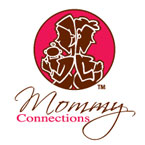Top parenting stories this week
Breastfeeding 101: How to get the perfect latch
Getting the right latch is the key to having a positive breastfeeding experience. Here's how to make sure your baby's latch is perfect.
by: Nancy Ripton
In This Article
Breastfeeding Latch
- Nipple soreness is almost always a sign of a bad breastfeeding latch.
- Skin-to-skin contact calms your baby and encourages her to take the breast on her own.
- When latching on, the baby's chin should touch the breast, but her nose should not.
- Your baby should cover more of the areola with her lower lip than with her upper lip.
- Watch your baby for hunger cues; if you wait until she cries, it will be harder to get a good latch.
 reastfeeding may be natural, but that doesn't mean it's always easy. One of the biggest complaints from new moms is nipple pain. "If your nipples hurt, it's usually because of a poor breastfeeding latch," says Dr. Jack Newman, head of the Newman Breastfeeding Clinic in Toronto. Getting the right latch from the beginning is important for two reasons: it ensures your baby is getting sufficient milk and it prevents nipple pain. Here's how to get the right latch to increase your odds of breastfeeding success.
reastfeeding may be natural, but that doesn't mean it's always easy. One of the biggest complaints from new moms is nipple pain. "If your nipples hurt, it's usually because of a poor breastfeeding latch," says Dr. Jack Newman, head of the Newman Breastfeeding Clinic in Toronto. Getting the right latch from the beginning is important for two reasons: it ensures your baby is getting sufficient milk and it prevents nipple pain. Here's how to get the right latch to increase your odds of breastfeeding success.
Follow your baby's feeding cues
"Mother's need to be aware of the early feeding cues their babies show," says Dr. Newman. These include: sucking on hands during sleep, smacking lips, restlessness, turning toward mother and rooting. If you wait until your baby is crying before you feed her, it will be harder to get a good breastfeeding latch.





